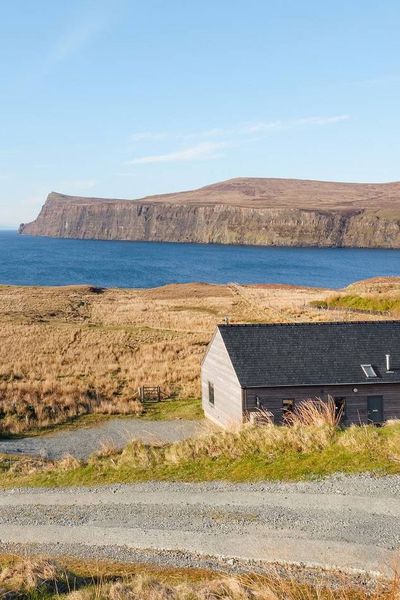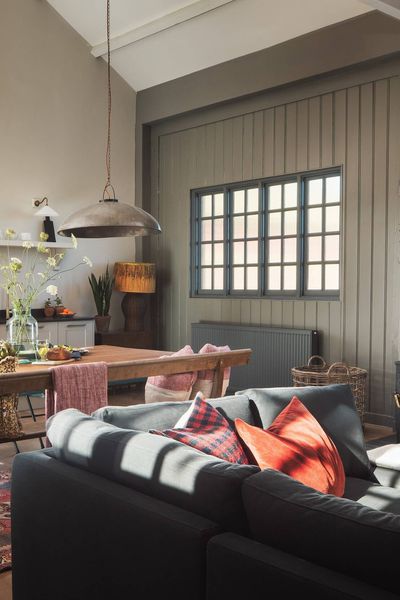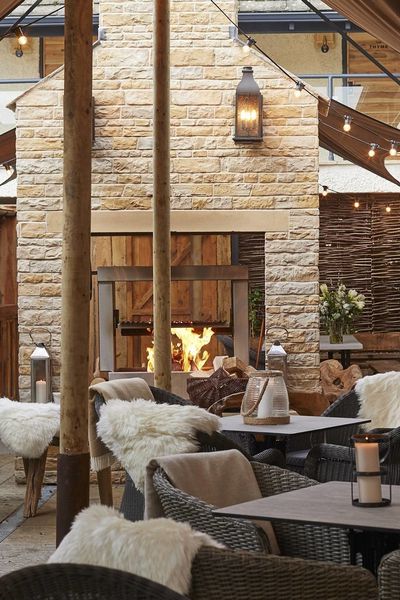
Oyster markets, coastal walks, and art deco towns: A guide to St Malo and the Emerald Coast
Guest Expert
5 min read
Travel writer Carolyn Boyd happily spends weeks and months travelling deep into France, but she also knows how simple and sublime it can be to explore the north coast from the UK. Here, she hops over to St Malo for a few days on the aptly named Emerald Coast.


Saint Malo
The walled town of Saint Malo makes quite the sight as you approach it by ferry. Its sea merchants’ grey stone mansions with neat lines of windows stand proud above its walls. If you get out on deck you can also admire the 500-metre stone jetty known as the Môle des Noires that juts into the sea with its red and white lighthouse at the end. Arriving by sea also gives you a flavour of what the Corsairs would have seen as they returned from far-flung shores, their ships full of spices, sugar and rum.
An early arrival delivers you to the town in time for breakfast and it’s just a short walk from the ferry port to Saint Malo Intramuros, the part inside the city walls. The Place Chateaubriand is named after the 18th and 19th century writer and politician who was born in the town and here you’ll find a host of cafes to have a café au lait and a croissant, which will fortify you for the walk around the ramparts that encircle the old town.
The view from the top is impressive: at low tide, the sandy shore is studded with rocks and islets, and you can even walk across to island Le Grand Bé, where Chateaubriand himself is buried. At high tide, the scene changes entirely, as the emerald waves creep in and hide the shore beneath. When hunger strikes, you won’t be disappointed, Saint Malo has more than its fair share of gastronomic delights. A galette is a must-try, and the Breizh Café is one of the best creperies in town. Choose from a variety of gourmet ingredients to top the buckwheat pancake. The shops, too, are a joy to browse. On the same road as Breizh café, there is a shop dedicated to buckwheat, while opposite, the Maison du Beurre is a much-loved stop for fans of butter. Beurre Bordier comes in flavours from Madagascan vanilla to seaweed. Elsewhere, explore the Epices Roellinger, an Aladdin’s Cave of a spice emporium created by top local chef Olivier Roellinger. When you’re done exploring Intramuros, walk out along the seafront to admire the 19th century villas that gaze out upon the waves, including Hotel les Charmettes, an ideal base for a day or two in Saint Malo.
Explore all our places to stay in St Malo >


Cancale
Just east of Saint Malo, across the peninsula via a short trip on the number five bus, Cancale is France’s oyster capital. They’re not to everyone’s taste, but a great place to give these top-quality molluscs a try is at the beachside oyster market. Buy a plate of a dozen from one of the many stalls with their blue-striped awnings, then sit on the rocks, give them a squeeze of lemon and knock them back. It’s customary to throw the shells back on the beach where they reinforce the shore. The tide changes the scene here dramatically, too. At high tide, there’s nothing to see but the gentle lapping water against the jetty, you can spy the outline of Mont-Saint-Michel on the horizon; but the low tide reveals the incredible oyster-growing operation here, where the racks on which they are cultivated stretch out for nearly a kilometre. You can learn all about their fascinating history and how they are grown with former oyster farmer-turned-guide Inga Smyczynski, who runs Ostreika tours. The village, set back from the seafront on the hill behind, is worth exploring too. There are brocante shops and another Epices Roellinger spice shop.
Explore all our places to stay in Cancale >


Dinard
While Saint Malo’s history is that of Corsairs and seafaring, Dinard owes its story to the Belle Epoque when it became a fashionable resort for well-heeled English. Reached from St Malo via a ferry bus operated by Compagnie Corsaire, it has a British Church and even celebrates its British Film Festival each September – its winners are awarded a statue in the shape of Alfred Hitchcock. The legendary film director visited the town and is said to have been so taken by the sight of the Villa La Roches Brunes, set high above the main beach, that he used it as inspiration for the setting of Psycho. Take a wander through the other stately villas that cluster on the Pointe de la Malouine before dropping into La Roches Brunes, which is now an art gallery. On the other side of the beach, cold water swimmers can take a dip in the tidal pool, which stays full even when the sea retracts a huge distance at low tide. From here, you can follow the coastal path around the rocks of the Pointe du Moulinet. The sea might splash your ankles if the tide is coming in, but follow the path around the headland to arrive back in the centre of town. Dinard is home to galleries, independent boutiques and some excellent restaurants including Ombelle, where chef Alexandre Frin’s dishes bring together produce carefully sourced from the best local farms/fishermen, including salt marsh lamb from the plains around Mont Saint Michel.
Explore all our places to stay in Dinard >


Saint Lunaire to Saint-Brieuc-sur-Mer
Dinard isn’t the only smart resort on this coastline; Saint-Lunaire is smaller but has a similarly sophisticated feel, with some beautiful art deco, art nouveau and Belle Epoque architecture.The number 16 bus can get you there from Dinard and carries on along the coast past Saint Lunaire to more towns beyond. Saint Lunaire’s spectacular beach, Le Grand Plage, is vast but better still is the view from the Pointe du Décollé headland. From high on this rocky promontory, you can admire the coastline and the stunning beaches both east and west. Have coffee or a galette at Crêperie de L’Amirauté to bask in the sensational location a little longer, then head on to Saint-Briac-sur-Mer, around the coast, which is blessed with some excellent beaches including the Plage du Bechet, a perfect semi-circle of soft amber sand backed by a long row of beach cabins, doors painted in different shades of blue and overlooking the multi-turreted, red-brick chateau.
Explore all our places to stay in Saint Lunaire >


Cap Fréhel
The Emerald Coast gets a little wilder the further west you go, and on its last headland, Cap Fréhel, you’ll find the Fort La Latte, a formidable medieval castle that clings to the cliffs. A winding sandy path leads you from the car park and out to the 700-year-old castle that could have been designed by a child, so typical are its drawbridge, turreted tower and portcullis. See inside its dark tower then make the heart-stopping climb to the roof via some very narrow steps. It’s worth it to see how the dramatic location of the castle helped it fight off many an enemy. The other corner of the Cap Fréhel peninsula is a beautiful, heather-clad moorland that is pleasant for hikers. You can stay nearby at the Hotel le Manoir Saint Michel.
Explore all our places to stay in Brittany >
Want more travel inspiration? Get our email updates direct to your inbox >
Sign up >Share this article:
You might also like
Bringing everyone together – the Brittany trip that all three generations loved

Nicky deBouille
Sawday's Expert
5 min read
Medieval towns, island jaunts, and fishing villages: A regional guide to Brittany

Carolyn Boyd
Guest Expert
5 min read
Slow Guide to Brittany

Christopher Wilson-Elmes
Sawday's Expert
5 min read












